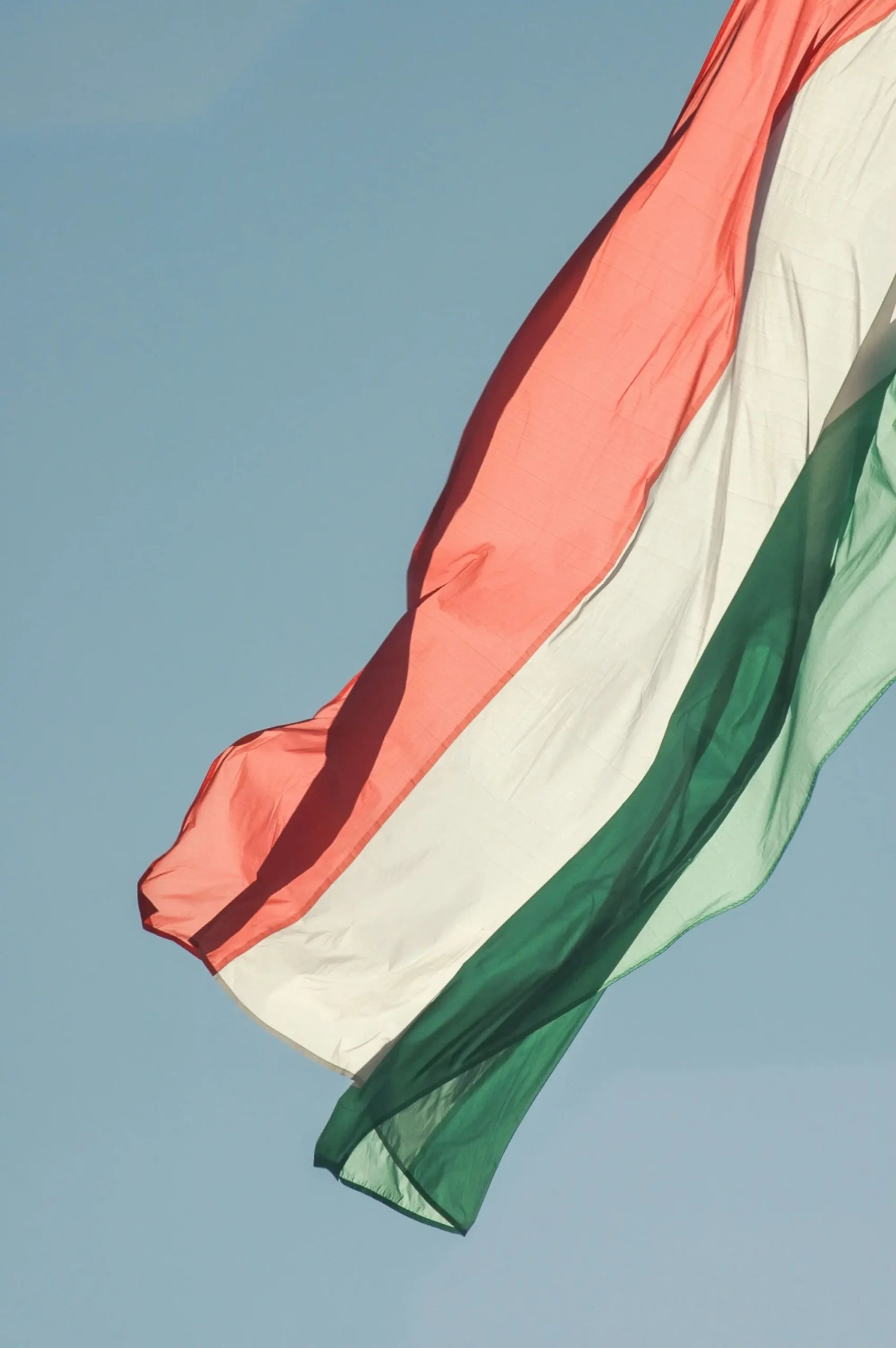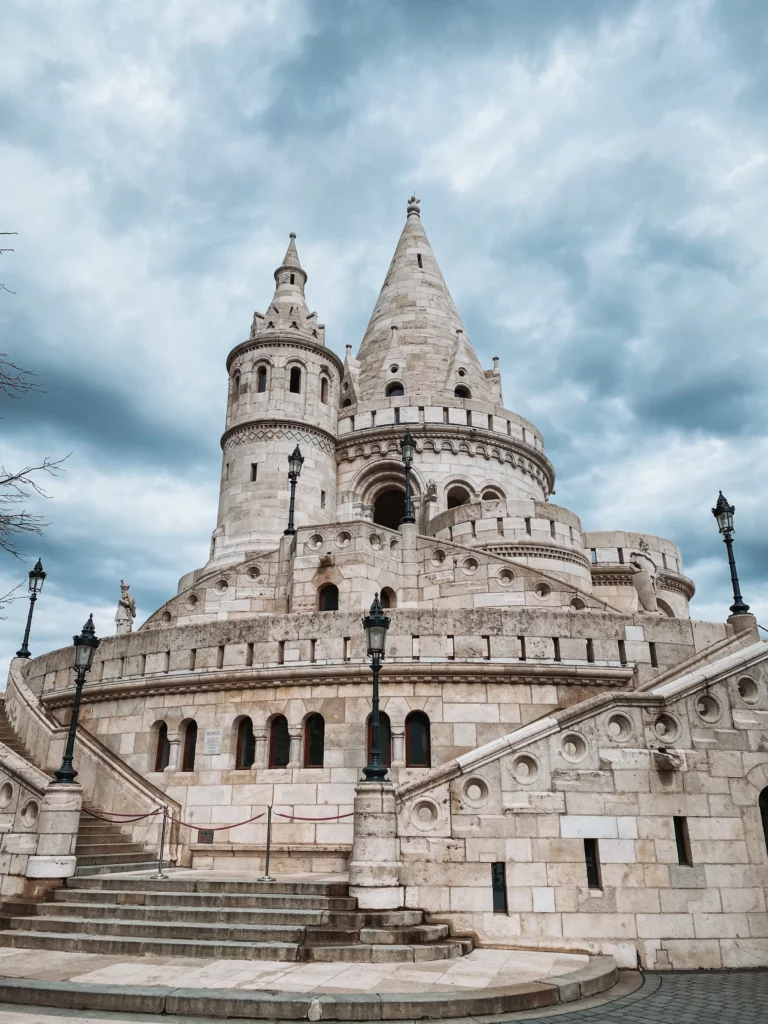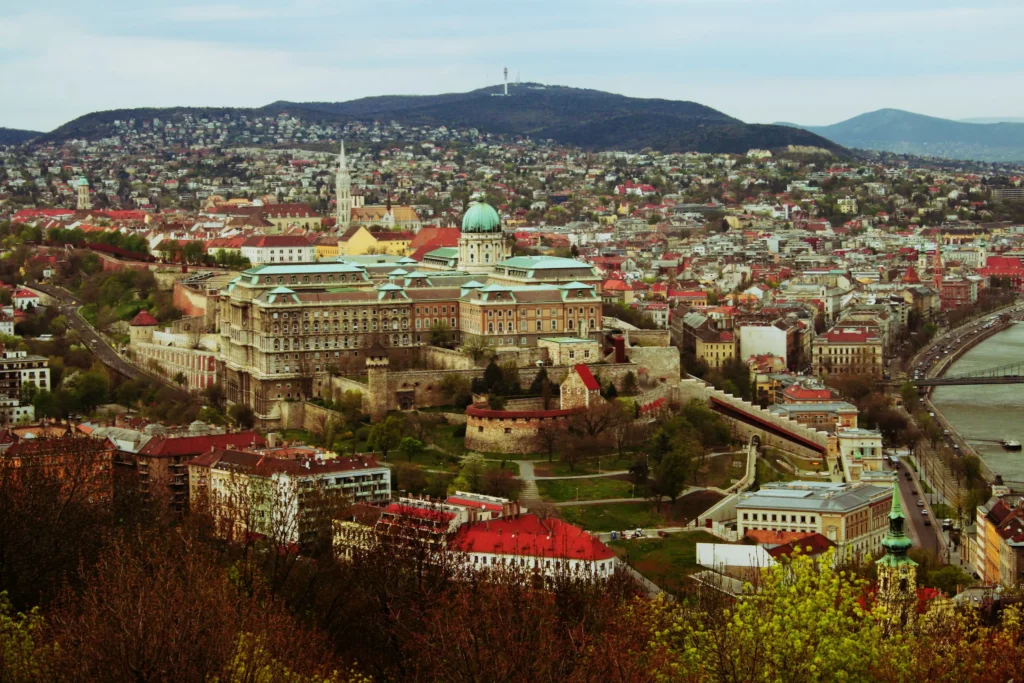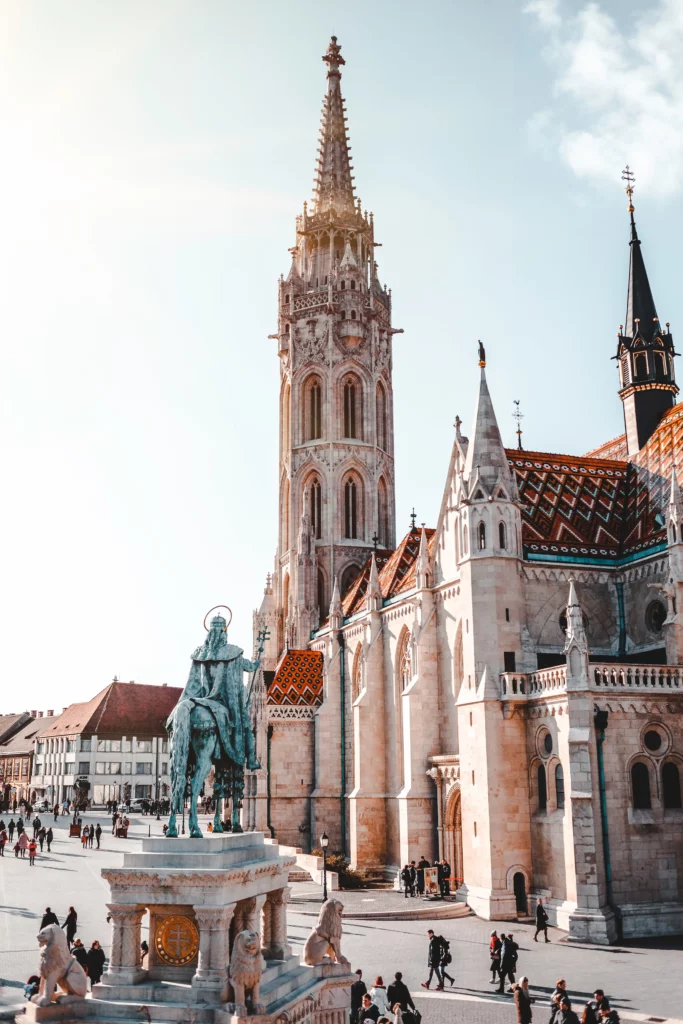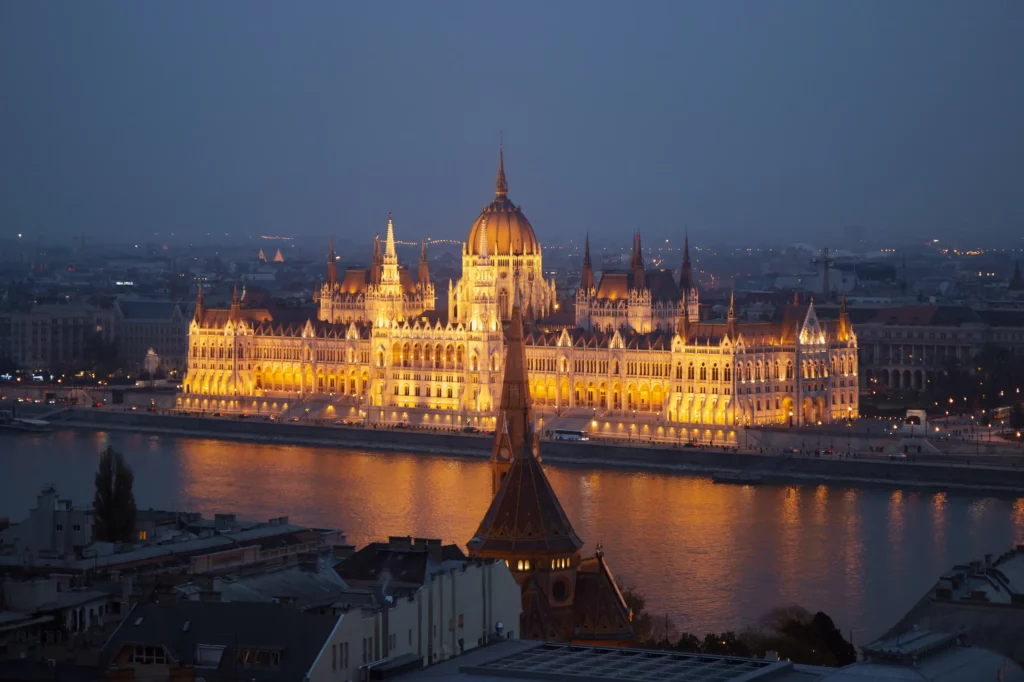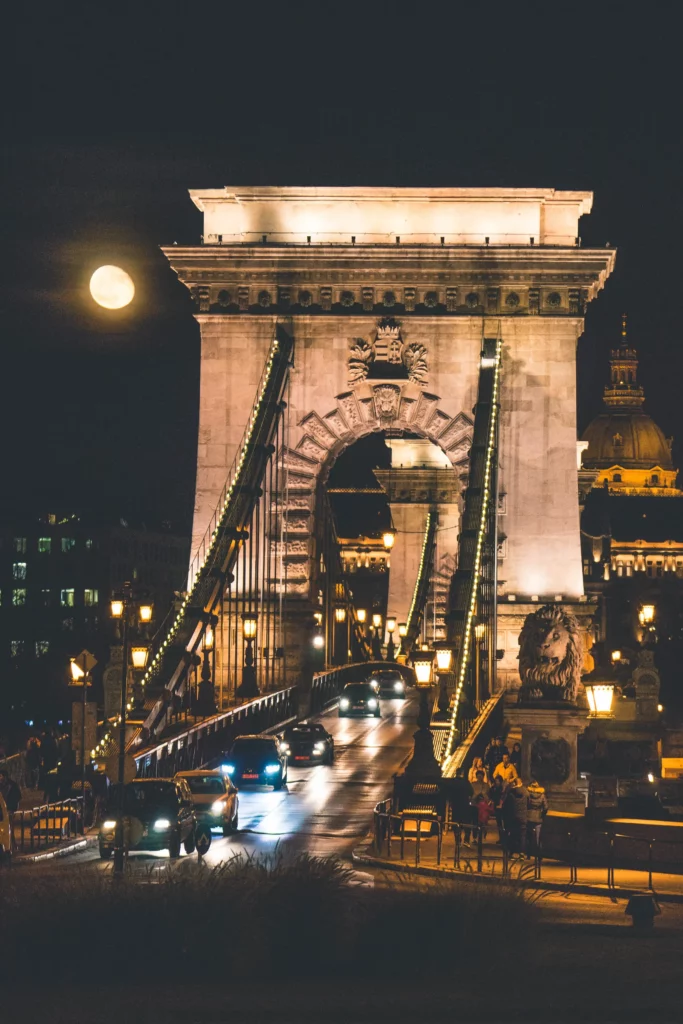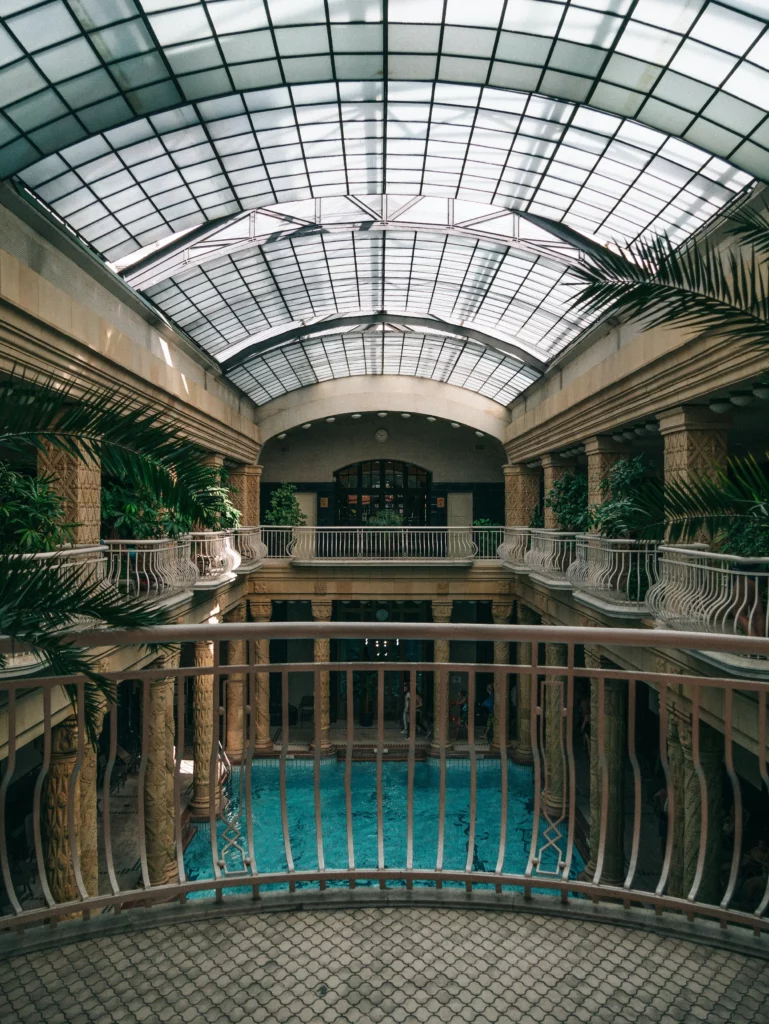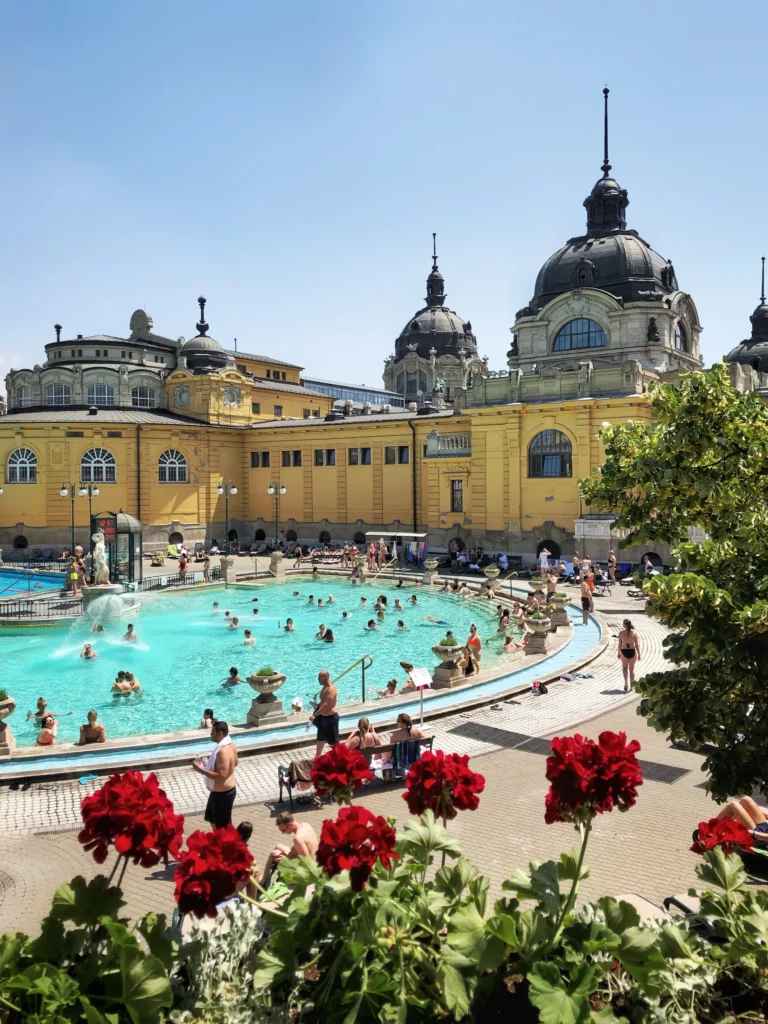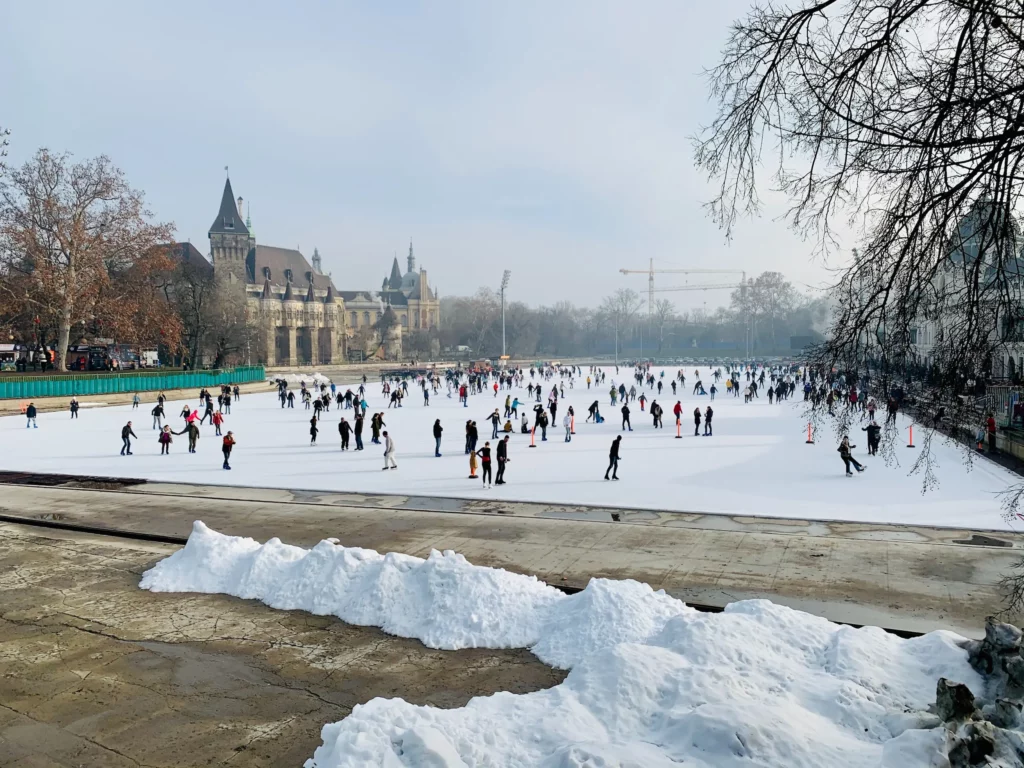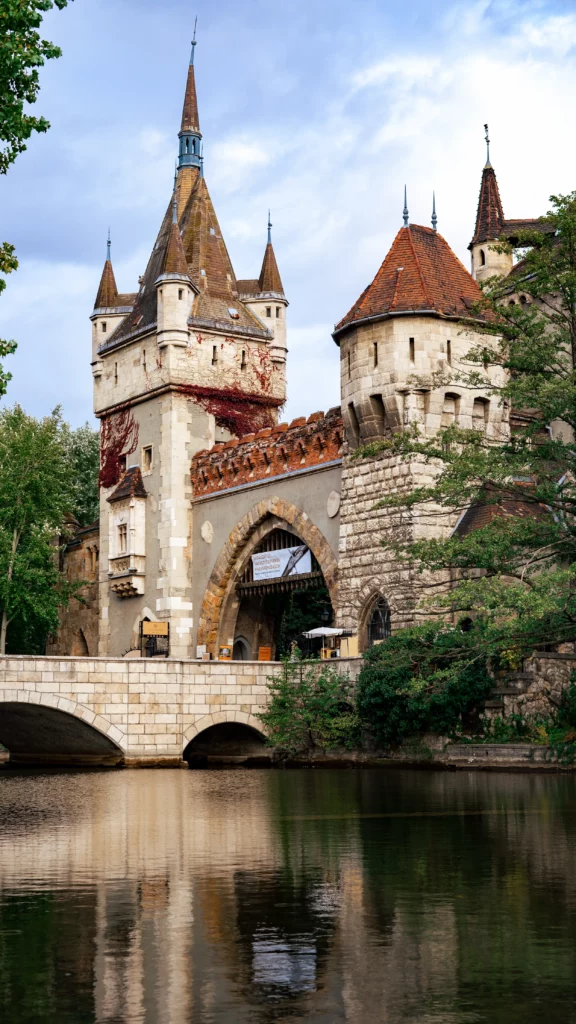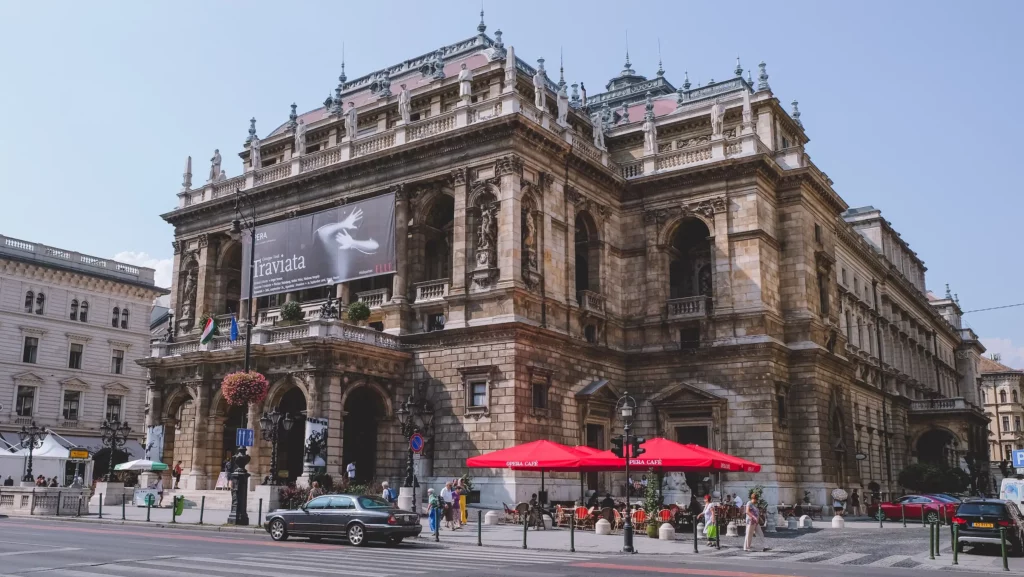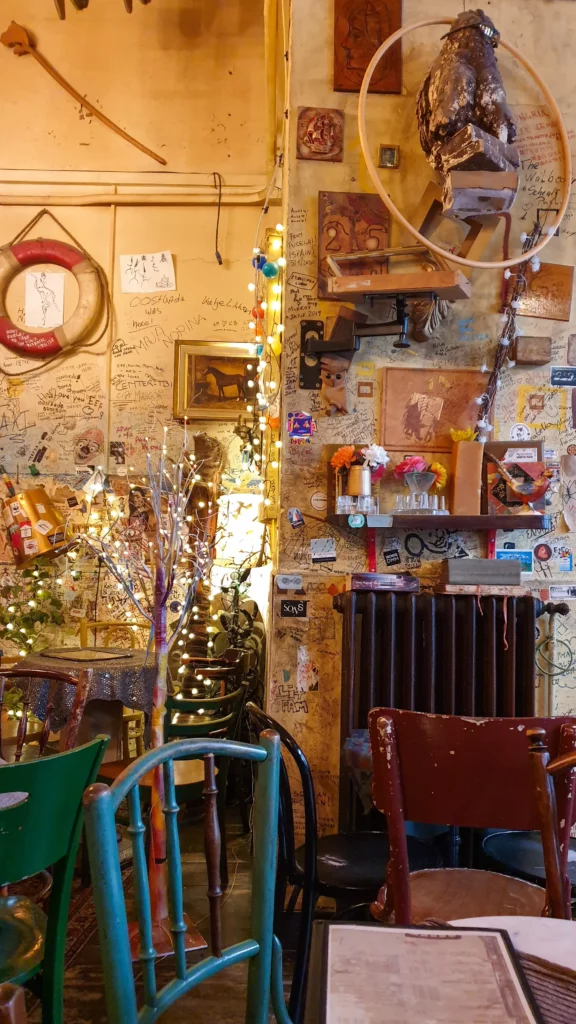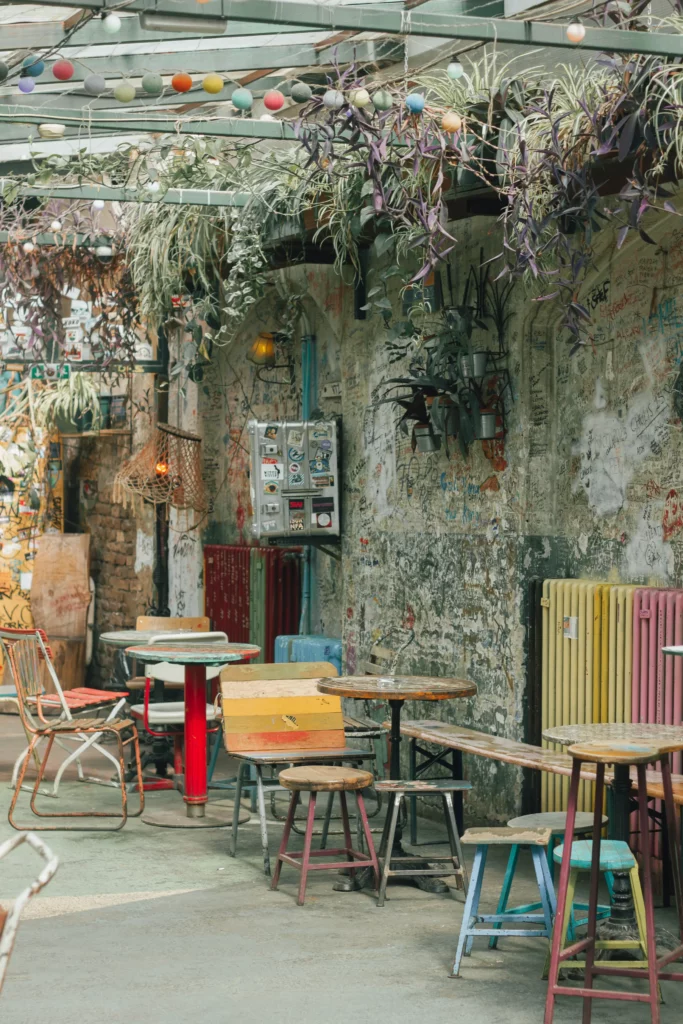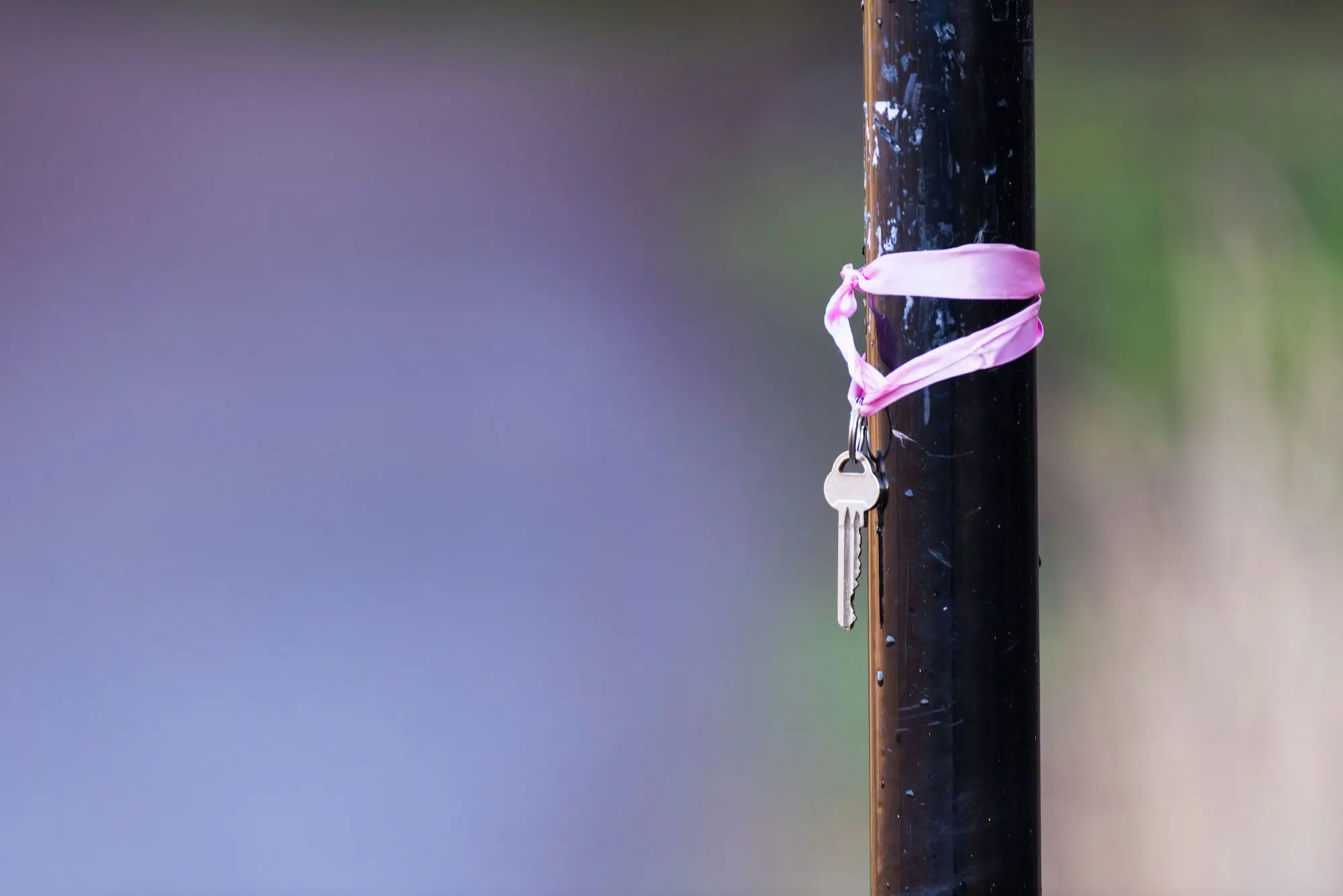Budapest is known for its breathtaking views, charming streets, and, of course, the majestic Danube River that splits the city into two parts: Buda and Pest. This geographical division also reflects in its architectural diversity.
Buda, with its rolling hills and historic castle district, showcases a blend of Gothic, Baroque, and Renaissance influences. Pest, the bustling heart of the city, features architectural styles from the 19th and 20th centuries, including the iconic Hungarian Secession.

Buda Castle and Matthias Church
Our architectural journey begins with Buda Castle, perched high atop Castle Hill, stands as the iconic centerpiece of Budapest’s Várnegyed (Castle District). Within its walls, Buda Castle houses several vital political offices and foreign missions, adding to its importance in the city’s administrative and diplomatic landscape. Buda Castle is a UNESCO World Heritage Site, and a testament to Gothic and Baroque architecture.
The stunning Matthias Church nearby, with its colorful tiled roof and intricate stonework, is a true masterpiece. The former coronation site has now become a beloved wedding venue, where couples are willing to wait for years to have the opportunity to tie the knot in this beautiful church.
Hungarian Parliament Building and Chain Bridge
No tour of Budapest is complete without visiting the Hungarian Parliament Building. This iconic Neo-Gothic structure along the Danube River is not only an architectural gem but also one of the largest parliamentary buildings in the world.
I believe that the Parliament is a breathtaking symbol of Hungary, nestled in a beautiful area perfect for strolling. You can even hop on the famous Tram 2 route, which ranked 7th on National Geographic’s 2012 list of the world’s most beautiful tram routes, surpassing all other European tram lines.
Additionally, a visit to the Parliament can be combined with a walk across the Chain Bridge, a structure with a fascinating history that could fill an entire Hungarian history lesson. Notably, the iconic lion statues on the bridge’s abutments also have their unique story. In 1852, the four stone lions were placed on the bridgeheads as decorative elements by sculptor Marschalkó János. Legend has it that a stonecutter named Frick Jakab noticed that the animals were missing tongues, and when the sculptor was confronted with this, he threw himself into the Danube from the bridge.
Gellért Thermal Bath and Széchenyi Thermal Bath
For lovers of Art Nouveau, the Gellért Bath is a must-visit. This thermal bath, housed in a beautiful Secessionist building, offer relaxation and architectural splendor in one place. Gellért Thermal Bath is located on the Buda side near the Buda abutment of Liberty Bridge.
If you are not planning on visiting that part of Budapest, Széchenyi Thermal Bath can be conveniently combined with a trip to City Park (Városliget). Széchenyi is open year-round, featuring outdoor pools suitable for both winter and summer visits, and they even host night baths for a unique experience.
If you end up visiting Városliget in the winter, I recommend not missing out on the ice skating rink. It’s one of my favorite winter activities, and I think it’s enjoyable even for those who can’t ice skate because the rink is quite large. You can rent skates, and they also offer hot chocolate to warm up with.
Another piece of advice for your visit to this location is to explore the Vajdahunyad Castle, which is an eclectic mix of architectural styles. This picturesque castle was built to showcase Hungary’s architectural diversity and features Romanesque, Gothic, Renaissance, and Baroque elements.
Hungarian State Opera House
The Hungarian State Opera House is a prime example of Neo-Renaissance architecture. With its grand staircase, opulent interiors, and superb acoustics, it’s a cultural treasure that reflects Budapest’s passion for music and the arts.
Visiting the Opera House can be combined with a visit to the famous House of Terror Museum, as the two are within walking distance (10 minutes) of each other. The House of Terror (Terror Háza) is a museum dedicated to presenting and commemorating the history of the fascist and communist regimes that oppressed Hungary in the 20th century. The museum is housed in a building that was formerly used by both the Nazi Arrow Cross Party and the communist ÁVH (State Protection Authority) secret police.
Budapest’s “Ruin Bars”
In recent years, Budapest has gained fame for its ruin bars (romkocsma), quirky and innovative establishments located in dilapidated buildings. These unique venues blend historic architecture with contemporary design, creating a vibrant and artistic atmosphere that reflects the city’s modern spirit.
These ruin pubs are popular among both Hungarians and tourists. There are numerous lists of the best ruin pubs, and among tourists, Szimpla Kert is the most popular, although locals rarely frequent it. Other popular options on the Pest side include Csendes Létterem and Élesztő, while on the Buda side, Szatyor Bár is a hit.
Conclusion
Budapest’s architecture is a captivating blend of old and new, East and West, tradition and innovation. The city’s architectural diversity is a reflection of its rich history and dynamic culture. If my description hasn’t made it clear yet, Budapest holds a special place in my heart, and I genuinely believe it’s one of the most brilliant and livable cities in Europe.
Stay tuned for our next stop on this global architectural adventure as we continue to explore the world’s most remarkable structures and designs.
